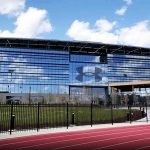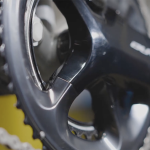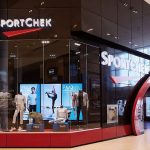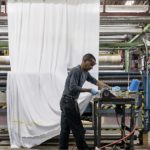As SGB Media reported on August 7 (see coverage below), the management at Callaway Golf, after acquiring the golf venue business, rebranded its corporate name to put the acquired business first, changed its ticker symbol to “MODG” to represent a focus on “Modern Golf” from its former iconic “ELY” ticker symbol (a nod to company founder Ely Callaway), has made a strategic review of the Topgolf business that had soared to new heights during the pandemic and has since fallen with struggling same-venue profitability and softer sales increases that are reliant of new venues and limited same-store sales growth.
“As we look forward, we remain convinced that Topgolf is a high-quality business with significant future opportunity. It is transforming the game of golf, and we believe it will deliver substantial growth and financial returns over time,” company President and CEO Chip Brewer said on its August 6 conference call. “At the same time, we have been disappointed in our stock performance for some time, as well as the more recent same-venue sales performance,” Brewer continued.
Brewer then informed the call participants (Wall Street analysts) that the company was conducting a full “strategic review” of the Topgolf business.
“This review includes the assessment of organic strategies to return Topgolf to profitable same-venue sales growth and inorganic alternatives, including a potential spin [off] of Topgolf.
“Our strategic review of Topgolf is being conducted with the help of outside advisors and is focused on maximizing long-term shareholder value. We are active in this work at present and expect to complete our strategic review of Topgolf expeditiously. We will report back on this when the work is complete,” he continued.
Brewer continued to say that despite macro headwinds, including the cumulative impact of negative FX trends, persistently high inflation and recent softer-than-expected traffic to Topgolf venues, he was “incredibly proud” of the team’s ability to drive market share gains in the golf products business as well as the continued strengthening of the digital capabilities and fundamental venue profitability at Topgolf.
Fast-forward one month. The conversation is about “creating shareholder value” and selling the deal. It’s not that the separation of the two companies is a bad idea; it makes total sense. But how much will it ultimately cost the Callaway business for making the acquisition in the first place and getting into an events business when product innovation is your sweet spot?
Here’s the Pitch
Separation will Create a Leading Golf Equipment and Active Lifestyle Company with Strong Free Cash Flow and the Category Leading, High-Growth, Pure-Play Venue-Based Golf Entertainment Business.
The thing is, Callaway had a leading golf equipment and active lifestyle company before it acquired Topgolf and merged the companies. It’s hard enough to get softgoods and equipment—in any sport—to play nice together, let alone a venue, an events business, and a product marketing business. There’s not much crossover there.
Here’s the Latest
Topgolf Callaway Brands Corp. (TCB) announced last night, September 4, that its Board of Directors intends to pursue the separation of its business into two independent companies: Callaway, a leader in golf equipment with a highly complementary Active Lifestyle business, with last twelve months revenue through Q2 2024 of approximately $2.5 billion, including Toptracer, and Topgolf, a category-leading, high-growth, pure-play venue-based golf entertainment business, with the last twelve months revenue through Q2 2024 of approximately $1.8 billion, excluding Toptracer.
The company said it expects to affect the separation by spinning off the Topgolf business to Topgolf Callaway Brands’ shareholders in a transaction intended to be tax-free for both the company and its shareholders for U.S. federal income tax purposes.
While TCB expects that a spin-off of Topgolf into a stand-alone public company is the most likely separation path, the company said it will continue to evaluate other options for separation to maximize shareholder value.
“Over the last decade-plus, we have transformed Callaway into the No.1 brand in golf equipment while building a successful and complementary apparel and accessory business,” commented Brewer in a September 4 media release. “We believe this business, on a stand-alone basis, will be well understood and valued by the market. Since our merger with Topgolf, we have made considerable investments in the Topgolf business that have dramatically expanded its scale, digital capabilities and venue profitability. These investments, combined with the hard work of the Topgolf team, have allowed us to outperform our original growth and free cash flow expectations.”
Brewer continued, “Looking forward, we remain convinced that Topgolf is a high-quality, free cash flow generating business with a significant future value creation opportunity. Topgolf is transforming the game of golf and is expected to deliver substantial financial returns over time. At the same time, Topgolf has a different operating model, capital structure and investment thesis than Callaway, and as a result, the Board has determined that separating Topgolf will best position Topgolf and Callaway for success and maximize shareholder value.”
John Lundgren, chairman of the Board of Directors at Topgolf Callaway Brands, said the announcement was the result of “a thorough strategic review conducted by the Board of Directors and the management team. The creation of two independent companies, each with a distinct focus and proven business model, is intended to drive continued momentum in both businesses and deliver value to all our shareholders.”
The Pitch Deck
Following this strategic review, the company has determined that Callaway and Topgolf will be better served operating independently from one another. The company believes that creating two companies will result in material benefits to the stand-alone businesses that will maximize shareholder value, including:
- Enhanced Strategic Focus: This transaction will create two strong, focused operating companies with industry-leading market positions and a greater ability to align incentives with performance and shareholder value creation.
- Optimized Capital Allocation: Callaway and Topgolf have different free cash flow profiles and funding needs. The separation will position both businesses to implement appropriate capital investment while maintaining an appropriate level of leverage.
- Simplified Operating Structure: Simplifying the operating structure of each business will improve execution and organizational agility.
- Distinct Investment Thesis for Each Entity: As separate businesses, Callaway and Topgolf will represent different and compelling investment opportunities. Investors can support and invest in each company based on their distinct qualities, including growth drivers, financial profile and capital allocation framework. Furthermore, the separation of Callaway and Topgolf will simplify financial reporting for investors.
Creating Two Strong Companies
Callaway
Callaway will consist of the company’s existing Golf Equipment, Toptracer and Active Lifestyle businesses. These businesses generated revenue of approximately $2.5 billion for the last twelve months through Q2 2024. Callaway said it maintains the No.1 U.S. market position in golf clubs and a growing No.2 position in golf balls.
Callaway’s portfolio of brands will include Callaway, Odyssey, TravisMathew, Ogio, Jack Wolfskin, and Toptracer. The company said Callaway will be well-positioned to generate significant free cash flow, reinvest in growing its market-leading positions and return capital to shareholders while operating at an appropriate level of leverage for its operations and financial profile.
Topgolf
The Topgolf business will consist of the company’s existing Topgolf business, excluding the Toptracer business, which will be part of Callaway. With revenue of approximately $1.8 billion in the last twelve months through Q2 2024, Topgolf is expected to continue to be the category-leading, pure-play venue-based golf entertainment company.
Its portfolio will initially include over 100 U.S. and international venues.
Topgolf’s strategic priorities will remain as follows:
- Drive profitable same-venue sales growth,
- Increase venue operating margins through further improvements in operating efficiencies, and
- Pursue new venue development, resulting in meaningful revenue growth, bottom-line operating leverage and accelerating profitability.
Importantly, Topgolf will be well-capitalized, with a significant cash balance and no financial debt, positioning the company to continue to capture its long-term growth opportunity.
Capital Structure and Ongoing Commercial Agreements
TCB intends to spin off at least 80.1 percent of Topgolf to obtain the desired tax-free treatment of the spin-off for U.S. federal income tax purposes and will also consider retaining a limited ownership in Topgolf for a period of time.
In connection with the separation, the new Callaway business is expected to retain all existing Topgolf Callaway Brands financial debt, including both the term loan and the convertible notes.
Topgolf will retain its venue financing obligations but will have no financial debt and be funded with a significant cash balance. Topgolf intends to reduce its new venue development plans for 2025 to a number in the mid-single digit range to appropriately balance growth and free cash flow during this transition year.
TCB said one of the advantages of Topgolf’s current scale and embedded free cash flow is this optionality of when and how to build new venues, thereby allowing Topgolf to balance its mutual goals of growth and positive free cash flow. Upon separation, the company expects both businesses will be capable of funding their own respective growth opportunities, capital allocation priorities and strategic plans.
In connection with the separation, the two companies are also expected to enter into ongoing, value-creating commercial agreements with one another. For example, Callaway will remain Topgolf’s exclusive golf equipment partner. TCB also expects limited dis-synergies as a result of the separation.
Experienced and Proven Leadership
Callaway will continue to be led by President and CEO Chip Brewer and Topgolf will continue to be led by CEO Artie Starrs.
Wall Street Reacts
The separation will benefit both businesses from a Wall Street perspective, but there are some concerns.
- Jefferies analyst Randal Konik said the separation plan was not a surprise and should be considered a positive step forward. Still, he warned that the need for Callaway to retain all the debt diminishes the value of the core Callaway business. “Consequently, we don’t anticipate significant movement in the stock,” he noted.
- Morgan Stanley also took a cautious stance on the deal, with analyst Megan Alexander suggesting it was encouraging to learn that Topgolf will moderate unit growth next year, have no financial debt and a $200 million cash balance. On the other hand, Alexander noted that Topgolf still has approximately $120 million in annual rent expense (versus $307 million EBITDA), growing 2 percent annually. “We believe maintenance CapEx is onerous and likely accelerates in the coming years given the rapid unit growth over the last several years,” she warned.
- Last month, BofA Global Research downgraded TCB to “Neutral” and lowered its PO to $13 after the Q2 conference call, noting “a challenging outlook for Topgolf.” Analyst Alexander Perry wrote that the expected same-venue sales would decelerate against easier comps.
Next Steps
Management said it is developing detailed separation plans for further consideration and final approval by the company’s Board of Directors. While the company expects that a spin-off of Topgolf into a stand-alone public company is the most likely separation path, it will continue to evaluate other options for separation to maximize shareholder value.
The company expects to execute the spin-off of Topgolf in the second half of 2025, but there are no assurances regarding the timing or terms of the separation or that the separation will occur. The company may, at any time and for any reason until the proposed transaction is complete, abandon the separation or modify or change its terms, including the individual businesses and components of each of the two companies.
During this period, further work on the structure, management, governance and other matters will take place. The company will provide interim updates where appropriate. Throughout the process, management will remain focused on delivering business results, returning Topgolf to same-venue sales growth and increasing profits.
“Our employees’ dedication and hard work has enabled us to take this next step in the Company’s evolution,” said Brewer. “Our Callaway and Topgolf businesses both employ very talented and dynamic people. I am confident that we will maintain the commitment to excellence that has been key to our success. The focus and other benefits that come from creating two independent companies are expected to provide even greater opportunities for our employees and our brands.”
TCB noted that the transaction is subject to general market conditions and other customary conditions, including receipt of regulatory approvals, an opinion from tax counsel and/or a private letter ruling from the Internal Revenue Service regarding the tax-free status of the spin-off of the Topgolf business to the company and its shareholders for U.S. federal income tax purposes, execution of intercompany agreements, further due diligence as appropriate and final approval by the company’s Board of Directors.
Details of the separation are expected to be included in future filings with the Securities and Exchange Commission.
The company’s financial advisors are Goldman Sachs and Centerview Partners, and Latham & Watkins LLP serving as legal counsel.
Image courtesy Topgolf
















